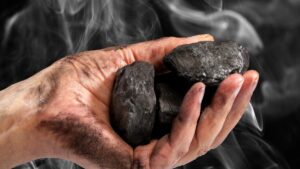Shine On You Crazy Diamond: Lithium player Winsome looking left-field and long term to develop Canadian mine

Picture: Getty Images
- Winsome Resources targets capex savings with plan to retool Canadian diamond plant to process lithium from 59Mt Adina deposit
- Boss Chris Evans says the company is fielding interest from strategic partners for offtake and downstream processing
- James Bay hopeful eyes ‘sensible’ long term spodumene price of US$1500-2000/t after price volatility that has rocked EV supply chain
Lithium prices have staggered in their volatility, with hard rock concentrate material climbing from US$500/t to US$8,000/t and back to ~US$1000/t in under four years as demand for the metal in electric vehicle batteries has boomed.
But an explorer hoping to be among the first to develop major lithium deposits in Canada says prices are turning around for the better.
While chemical pricing in China is yet to move materially from two-year lows in the low US$13,000/t range, spot prices for the spodumene concentrate sold by West Australian miners has lifted from US$850/t to US$1150/t in recent weeks.
Winsome Resources (ASX:WR1) MD Chris Evans, whose company owns the 59Mt Adina project in Quebec’s James Bay lithium district, thinks a maturing lithium market will make pricing more predictable as it evolves.
“I’d probably say somewhere between US$1500-2000/t is a sensible long term figure to use,” he said.
Winsome took a major step to support the development of Adina yesterday by emerging as the buyer of bankrupt diamond miner Stornoway’s Renard mine and concentrator 60km to the south.
It’s not looking to diversify into diamonds. Stornoway has collapsed twice since opening Renard in 2019, with diamond prices tanking as badly as lithium in recent times.
But it will deliver a permitted 2.2Mtpa plant, 330 person camp and other critical infrastructure already set up to withstand the harsh Canuck winter.
A C$4m option fee will be paid by Winsome once the Canadian Supreme Court approves the acquisition so the explorer can assess the feasibility of converting the plant as it progresses studies on the development.
Looking down the line, Evans said Winsome has been in discussions with strategic investors over offtake and plans to feed Adina’s product into a Canadian refinery producing lithium chemicals that are compliant for US carmakers with Inflation Reduction Act subsidy rules.
“With the model going forward, and the sort of talks we’re having particularly with strategics is that these big price spikes are a sign of an immature industry and as the industry matures, going forward, there’ll be more vertical integration,” he said.
“That’s one reason we’re looking for a partnership with a converter.
“That means that there’ll be pricing mechanisms built in there and again if we can feed that straight into an end user in Quebec or in North America, then there’ll be pricing mechanisms to make sure all of us are protected from these wild swings that the spot price may do.”
Savings to be made
It remains to be seen just how much it will cost Winsome to repurpose the plant and develop its Adina deposit to produce a spodumene concentrate.
But recent project updates elsewhere in Canada have shown how inflation is impacting new lithium developments.
Based on benchmarking from other projects under study in Quebec like Arcadium’s (ASX:LTM) James Bay and Sayona’s (ASX:SYA) Moblan, Evans thinks the Renard plant could save as much a half a billion dollars for Winsome when it comes to capex.
“The processing plant at the moment is remarkably similar to what we would install. So there’s a jaw crusher, a cone crusher, high pressure grinding rolls and then a two stage dense media separation,” he said.
“If we were DMS only we would be putting something like that in — we may need another crusher and we’d have to resize some of the screens.
“If you look at similar greenfield brand new projects, Sayona’s Moblan just put out its definitive feasibility study and they had a capital cost of somewhere near a billion dollars.
“James Bay project put out its DFS late last year and they had a $700-800 million capex. If we assume ours would be around there somewhere for a greenfield project, I think it’s fairly safe to say we will be saving half a billion dollars at least.
“It’s hard to put a number right at the moment on how much it’ll cost but it’ll be a fraction of what a brand new project would cost.”
The model is strikingly similar to one Mineral Resources (ASX:MIN) has proposed to develop a third lithium plant in WA’s Goldfields.
It is buying Poseidon Nickel’s Lake Johnston nickel plant to add a flotation processing facility to its Mt Marion and Bald Hill DMS plants.
Evans said early test work suggested the material at Adina was coarse and could achieve lab recoveries of 65-80% with DMS only, though more testwork is needed.
How big can Adina get?
Initial studies at Adina are expected to be completed in the second half of 2024, with a DFS to follow and hoped to wrap up by the end of 2025.
By that point the lithium market could look very different to what it does today given the pace and intensity with which the EV supply chain is moving.
But regardless of the shape of the market, geology and the scale of resource will always play a major role in whether you can turn a deposit into a mine.
Evans said Winsome will undertake drilling in the hope of converting at least 60% of its 59Mt at 1.12% Li2O resource into the indicated category.
As opposed to inferred resources, indicated resources can be used in reserves, which in turn can be placed with higher confidence into a mine plan.
But Evans is hoping more drilling later down the line can grow the resource further and push into Tier-1 territory.
“There’ll be an increase in the size, but it won’t be doubling the size yet,” he said.
“But I think by the time we spend … our flow through money at the end of this year, our target’s sort of 100 million tonnes at Adina and then to me that feels like a bit of a magic number and enough to support a DFS on by the end of next year.”
Winsome Resources (ASX:WR1) share price today
Related Topics

UNLOCK INSIGHTS
Discover the untold stories of emerging ASX stocks.
Daily news and expert analysis, it's free to subscribe.
By proceeding, you confirm you understand that we handle personal information in accordance with our Privacy Policy.








